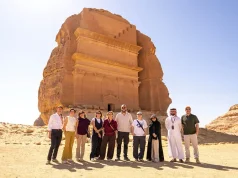
In today’s fast-paced digital world, where content is constantly being created, shared, and repurposed, knowing who or what wrote something is becoming increasingly important. With the rise of artificial intelligence tools that can generate full-length essays, product reviews, social media captions, and even news articles, the line between human and machine-made content is getting blurrier by the day.
While the advancement of AI has brought undeniable benefits in productivity, creativity, and efficiency, it’s also brought with it a fair share of challenges. Chief among them is the growing difficulty of verifying the authenticity of written content. This is where an AI detector becomes essential.
A Growing Dependence on AI Writing Tools
Artificial intelligence writing models are now so advanced that they can mimic tone, voice, and even emotional nuance. Students may use them to draft assignments, businesses use them to write marketing copy, and bloggers rely on them for daily posts. While these tools help save time and sometimes even enhance output quality, their widespread use has raised ethical concerns across industries.
For example, in education, teachers are struggling to determine whether a student’s essay was crafted by thoughtful human effort or simply copy-pasted from an AI tool. In journalism, where credibility is everything, there’s growing concern about the origin of information and whether it’s been generated or fact-checked by a human. And in digital marketing, brands are now reevaluating what “authentic” customer communication really means.
The Role of an AI Detector
An AI detector is a tool designed to determine whether a piece of text was likely written by a human or generated by artificial intelligence. Using machine learning and statistical models, these detectors analyze word patterns, structure, predictability, and sentence complexity to make an educated guess.
But they’re not just about catching someone trying to pass off AI-generated content as their own. These tools also serve a broader purpose: preserving integrity. Whether it’s a newsroom, a classroom, or a corporate office, knowing the origin of content helps decision-makers understand context, assess credibility, and make informed judgments.
Practical Use Cases for Everyone
It’s easy to assume AI detection is only useful for teachers or editors, but its potential goes much further. Parents might want to understand how their children are completing schoolwork. Employers might use it to assess writing samples from job applicants. Bloggers and influencers might want to ensure their ghostwriters aren’t relying too heavily on AI shortcuts.
Even more broadly, AI detectors can help news consumers evaluate the credibility of online content. In an era rife with misinformation and AI-manipulated media, a quick scan with a detector can offer peace of mind and a clearer picture of what you’re really reading.
Balancing Innovation and Responsibility
It’s important to note that using AI isn’t inherently bad. In fact, many writers, marketers, and researchers now incorporate AI as a creative partner to brainstorm ideas or overcome writer’s block. However, transparency is key.
The goal isn’t to shame those who use AI, but to create accountability and encourage honest communication. Just as we expect proper citations and sources in academic writing, we should expect acknowledgment when AI plays a significant role in content creation.
That’s what makes AI detectors so valuable, they empower individuals and organizations to be transparent without stifling innovation.
The Future of Digital Integrity
As technology evolves, so will our tools for navigating it. It’s likely that future versions of AI detection software will become even more accurate and possibly integrated into everyday writing platforms and social networks. This will help build a more trustworthy digital landscape where users can engage with confidence, knowing that what they read hasn’t been generated in a vacuum.
In the same way we’ve adapted to fact-checking news stories and verifying sources, we’re now entering a new era where verifying authorship will be a regular part of our digital hygiene. And that’s not a sign of mistrust, it’s a step toward maturity in how we interact with technology.
Whether you’re a parent, a teacher, a student, a content creator, or just someone who reads a lot online, understanding the rise of AI-written content, and how to identify it, is quickly becoming part of digital literacy. Tools like an AI detector aren’t just here to catch errors; they’re here to help us hold onto what matters most in a world of increasing automation: human truth.





